 August 29, 2019 John E. Ross, KD8IDJ, Editor
| ||||||
Amateur Radio Resources Ready as Dorian Predicted to Become a "Major Hurricane" Amateur Radio resources organized this week as Hurricane Dorian threatened Puerto Rico and the Virgin Islands and worked its way through the Caribbean. A change in direction spared Puerto Rico -- still recovering from hurricanes Irma and Maria in 2017 -- from taking a direct hit; the Virgin Islands suffered downed trees and widespread power outages. As of August 29, Dorian was a Category 1 storm with maximum sustained winds near 85 MPH with higher gusts. According to the National Hurricane Center (NHC), Dorian was expected to become a major hurricane on Friday and remain an extremely dangerous hurricane through the weekend, reaching Category 3 or 4 by September 1. "The risk of devastating hurricane-force winds along the Florida east coast and peninsula late this weekend and early next week continues to increase," the NHC said on August 29. "We are standing by in a ready-to-respond state, once a more definitive track is known," Southern Florida Section Manager Barry Porter, KB1PA, told ARRL Headquarters on August 29. "We will be holding a tri-Section conference call tonight to firm up any plans." Porter said Florida Voluntary Organizations Active in Disaster and Red Cross were in preparation mode. On Wednesday, the Hurricane Watch Net (HWN), activated for about 9 hours on 14.325 MHz and 7.268 MHz, working in conjunction with WX4NHC at the NHC in Miami to provide "ground truth" weather data to forecasters. The VoIP Hurricane Net also activated. The HWN has continued to closely monitor Dorian's progress. HWN Manager Bobby Graves, KB5HAV, said the HWN tentatively plans reactivate on August 30 at 2100 UTC. The ARRL Headquarters Emergency Response Team is also monitoring the situation closely. ARRL officials are in regular communication with partner agencies, particularly FEMA and the Department of Homeland Security. In addition, ARRL HQ remains in close contact with Field Organization officials in the affected region, where some ARRL Ham Aid equipment was previously positioned. W1AW, which had already planned to be in operation for the Hiram Percy Maxim 150th Birthday special event this weekend, will remain ready to assist with emergency communications. Visit the ARRL website or the Hurricane Watch Net website for updates on the progress of Hurricane Dorian. ARRL HF Band Planning Committee Reactivated to Address Spectrum Issues In an effort to more effectively address HF digital technology issues, ARRL President Rick Roderick, K5UR, has reactivated the ARRL Board of Directors' HF Band Planning Committee. The six-member panel, chaired by First Vice President Greg Widin, K0GW, will primarily focus on spectrum allocation issues that have gained increased visibility with discussions on accommodating automatically controlled digital stations (ACDS) -- many employing Winlink email. The committee will also discuss operating frequencies for FT4, FT8, and other digital modes. Widin says the committee will meet next week to chart its course. Reactivation of the HF Band Planning Committee came out of discussions during the July 2019 ARRL Board meeting.
"ARRL is not trying to shut down digital communication or shut down Winlink in particular," Widin said, adding that ARRL recognizes Winlink's proven track record in emergency communication. His committee also will consider Winlink supporters' calls for the expansion of the ACDS segments spelled out in §97.221(b) of the amateur rules. "This is not an easy task by any means," Widin allowed. "They're not making more bandwidth." "We're well aware that Winlink is the de facto standard supporting emergency communications in many parts of the country, but we have to figure out how it can operate with other modes, so that everybody can communicate, without having one mode overrun any other mode," Widin said. The committee will not address data encryption questions at this point, however. In response to ARRL's 2013 petition to delete the so-called "symbol rate" limit and replace it with a maximum bandwidth for data emissions of 2.8 kHz below 29.7 MHz, the FCC proposed to eliminate symbol rate (baud rate) limitations for data transmissions but declined to propose a bandwidth limitation.
"We still want to change the symbol rate limitation into a bandwidth limitation, which makes a lot more sense in terms of current and future modes," Widin said. The panel also hopes to work with the WSJT-X Development Group to establish FT4 frequencies compatible with existing band plans. Read more. 160 Years Since The Carrington Event September 1 marks the 160th anniversary of the Carrington Event, the strongest geomagnetic storm known to have hit Earth since at least the 14th century. The event was named for British astronomer Richard Carrington, who first viewed and sketched the huge sunspot complex on the sun from which a gigantic solar flare -- a coronal mass ejection -- erupted, as he watched. Within hours, Earth was virtually enveloped by an aurora borealis that was visible even at lower latitudes and into the tropics. It was a truly spectacular light show that in some places, turned night into day. When the flare interacted with Earth's magnetosphere, however, it was another story.
The Times account quoted an operator in Worcester, Massachusetts, who said, "During ten years' experience in telegraphing, I have frequently observed the effect of the Aurora Borealis on the wires, but never before have I seen it so grand and appalling." Operators said that at times the polarity of the battery power supply would become reversed. "One moment the batteries would begin to boil over, and we would have so strong a circuit that the armature would not come away from the magnet; the next moment, there would be no current at all," a report from Quebec recounted. Based on examinations of ice samples, scientists believe that geomagnetic storms two and three times stronger occurred prior to the 14th century. After the Carrington Event, scientists began paying a lot more attention to solar phenomena and sunspots. -- Thanks to Frank Donovan, W3LPL The Doctor Will See You Now! "Different Types of Grounds" is the topic of the new (August 29) episode of the ARRL The Doctor is In podcast. Listen...and learn!
Every 2 weeks, your host, QST Editor-in-Chief Steve Ford, WB8IMY, and the Doctor himself, Joel Hallas, W1ZR, will discuss a broad range of technical topics. You can also email your questions to doctor@arrl.org, and the Doctor may answer them in a future podcast. Enjoy ARRL The Doctor is In on Apple iTunes, or by using your iPhone or iPad podcast app (just search for ARRL The Doctor is In). You can also listen online at Blubrry, or at Stitcher (free registration required, or browse the site as a guest) and through the free Stitcher app for iOS, Kindle, or Android devices. If you've never listened to a podcast before, download our beginner's guide. Efforts Continue to Enhance ARES Program, Add Resources The ARRL Board of Directors, committees, and Headquarters administrative staff are continuing efforts to enhance the venerable Amateur Radio Emergency Service (ARES®) program. A major ARES Plan has been adopted, providing new direction going forward. In At its July meeting, the ARRL Board considered the report of its Public Service Enhancement Working Group (PSEWG). A "change log" was proposed for the Task Book that will highlight changes made as the document is periodically revised and updated. ARES position guidelines were posted to the online ARES Workbook and a major revision and update of ARRL's Introduction to Emergency Communications course -- now designated as EC-001 -- has been completed. The course is now available at no cost to any ARES registrant, and a "mentor-less" format has been added as a parallel path for completing the course. Additional mentors were recruited to assist in handling the initial surge of interest. A self-guided version that leads up to the final exam is also being implemented. An update and introduction of EC-016 -- Public Service and Emergency Communications Management for Radio Amateurs -- has been completed. Veteran Ohio Section Manager Scott Yonally, N8SY, has been brought on board to assist in implementing ARES Connect and to field questions about the new software package from users. ARES Connect is a volunteer management system covering event signup, reporting, and roster management, to simplify managing volunteers and events. Some modest procedural revisions have been made to the Ham Aid program. Read more. -- Thanks to The ARES E-Letter The K7RA Solar Update Tad Cook, K7RA, Seattle, reports: The current stretch of spotless days has continued for more than 3 weeks, according to Spaceweather.com. The continuing quiet seems eerie. For the past reporting week, Thursday through Wednesday, the average daily solar flux -- 10.7 GHz radiation that roughly tracks with sunspot activity -- was only 66. I had to go back to the fall of 2007 to find average solar flux in that range.
Predicted planetary A index is 5, 8, 20, 34, 16, and 8 on August 29 - September 3; 5 on September 4 - 5; 8 on September 6 - 7; 5 on September 8 - 21; 10, 15, and 8 on September 22 - 24; 5 on September 25 - 27; 35, 18, and 10 on September 28 - 30; 5 on October 1 - 2; 10 and 8 on October 3 - 4, and 5 on October 5 - 12. Spaceweather.com reported that a large recurring coronal hole is facing Earth, and the effects are expected to be felt on September 1, when the predicted planetary A index is 34. Sunspot numbers for August 22 - 28 were 0, 0, 0, 0, 0, 0, and 0, with a mean of 0. The 10.7-centimeter flux was 65.7, 66.5, 66.3, 66, 65.8, 66.1, and 65.9, with a mean of 66. Estimated planetary A indices were 6, 4, 5, 4, 6, 10, and 5, with a mean of 5.7. Middle latitude A index was 7, 4, 5, 5, 6, 10, and 5, with a mean of 6. A comprehensive K7RA Solar Update is posted Fridays on the ARRL website. For more information concerning radio propagation, visit the ARRL Technical Information Service, read "What the Numbers Mean...," and check out K9LA's Propagation Page. A propagation bulletin archive is available. Monthly charts offer propagation projections between the US and a dozen DX locations. Share your reports and observations. Just Ahead in Radiosport
See the ARRL Contest Calendar for more information. For in-depth reporting on Amateur Radio contesting, subscribe to The ARRL Contest Update via your ARRL member profile email preferences. Inter-American Proposal Removes 47 - 47.2 GHz from Bands under Study for 5G Services The 34th meeting of the Inter-American Telecommunication Commission (CITEL) Permanent Consultative Committee II (PCC.II) concluded a week of meetings on August 16 in Ottawa, Canada, in advance of World Radiocommunication Conference (WRC-19). The meetings were aimed at reaching regional consensus on WRC-19 agenda items. Attendees at PCC.II included ARRL Technical Relations Specialist Jon Siverling, WB3ERA, who is on the US delegation to WRC-19.
"The big news is that the Inter-American Proposal (IAP) going forward to ITU from CITEL countries has removed the 47 - 47.2 GHz Amateur Radio allocation from WRC-19 agenda item 1.13," Siverling said. "We are putting forward a 'no change' proposal." Supported by 13 member-states, the IAP would take frequencies in that range off the table for possible sharing with 5G International Mobile Telephony (IMT). Siverling conceded that other administrations could raise the issue at WRC-19. The International Telecommunication Union (ITU) Radiocommunication Sector (ITU-R) was to conduct and complete appropriate studies to determine spectrum needs for the IMT terrestrial component in the 24.25 - 86 GHz range, and studies on sharing and compatibility, while taking into account the protection of services with primary allocations on the band. ITU-R has not conducted any sharing studies between the IMT-2020 systems and incumbent Amateur Radio and Amateur Satellite services. "Therefore, it has not been demonstrated that the incumbent services can be protected, as required by Resolution 238 (WRC-15), and no change is proposed for the 47 - 47.2 GHz frequency band," the IAP said. Under WRC-19 agenda item 10 (future agenda items), language to protect the Amateur Radio primary 50 - 54 MHz allocation was included in a US proposal to study implementing space-based Earth Exploration Satellite Service (EESS) radars to operate in the 40 - 50 MHz range, in time for WRC-23, recognizing that 50 - 54 MHz is primary in Regions 2 and 3, with an alternative primary Amateur Service allocation in a number of Region 1 countries. Also under agenda item 10, the frequency segment 47 - 47.2 GHz was removed from a proposal to study several additional frequency ranges for the Fixed Satellite Service (FSS). Language in a Canadian contribution, with additions from the US delegation, was added regarding WRC-19 agenda item 9.1.6, which seeks to identify frequencies for medium- and high-power wireless charging of electric vehicles (WPT-EV). Delegates to PCC.II forwarded an IAP of no change to the Radio Regulations. The recent CITEL meeting was the last prior to WRC-19. Read more. -- Thanks to Jon Siverling, WB3ERA, and Bryan Rawlings, VE3QN France Stands its Ground on 144 - 146 MHz Aeronautical Mobile Sharing Proposal Heading into this week's European Conference of Telecommunications and Postal Administrations (CEPT) Conference Preparatory Group (CPG) meeting in Turkey, France was holding firm on its proposal to have the Aeronautical Mobile Service (AMS) share 144 - 146 with Amateur Radio. An "annex" submitted for the CPG doubles down on that country's determination to secure AMS access to that spectrum, although no longer on a primary basis. The CPG meeting will consider "France recognizes the wide range of amateur applications hosted by the 144 - 146 MHz band," the French annex document said. "The band will remain available for all these applications after WRC-23. However, a clear vision of the band segmentation per application and associated occupancy rates will be necessary for the sharing and compatibility studies carried on during the WRC-23 preparation cycle. Such studies are essential for assessing the possibilities of frequency sharing and establishing, where appropriate, the conditions that will ensure the continuity of operation and the protection of existing services." If the French proposal gets a thumbs up from at least 10 CEPT countries at the CPG meeting -- with not more than 6 opposing -- the proposal could appear on the agendas of WRC-19 and WRC-23, where a final decision will be made. In its own CPG meeting submission, the International Amateur Radio Union (IARU) called the French proposal "unsound" and contended that sharing of the current amateur allocation with AMS radio systems "is not possible without a significant likelihood of mutual interference." Read more.
Registration now is open for stations to register for Scouting's 2019 Jamboree on the Air (JOTA). JOTA will take place October 18 - 20. JOTA is Scouting's largest event in the world and always takes place over the third weekend of October. Click on "Sign Up Now" and register using your free Scout.org user id. Use the same site to register for the 2019 Jamboree on the Internet. Bill Stearns, NE4RD, has been named the Boy Scouts of America (BSA) National Jamboree on the Air Task Force Chair. He has activated a number of JOTA and Scout Camp stations from the Montana Scout Council and served on the 2017 National Scout Jamboree K2BSA and 2019 World Scout Jamboree NA1WJ staffs. The NA1WJ Amateur Radio operation at the 2019 World Scout Jamboree in West Virginia reported that more than 3,000 Scouts took part in the ham radio demonstrations, logging more than 4,000 contacts in 86 DXCC entities.
Upcoming ARRL Section, State, and Division Conventions
Find conventions and hamfests in your area.
. .
Subscribe to...
Free of charge to ARRL members...
| ||||||
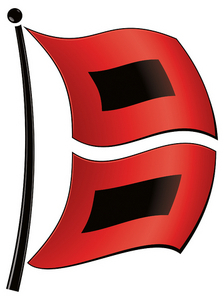 Heavy rainfall generated by Dorian could cause flash flooding, the NHC said.
Heavy rainfall generated by Dorian could cause flash flooding, the NHC said. .jpg)
 At its July meeting, the ARRL Board of Directors called for ARRL's Washington Counsel to obtain FCC approval for several Part 97 rule changes. The Board asked for a rulemaking petition to remove the current 300 baud rate limitation; authorize all ACDS below 30 MHz, regardless of bandwidth, to operate only within the ACDS bands designated in §97.221(b); require digital stations operating with a bandwidth greater than 500 Hz to operate within the ACDS bands, whether or not automatically controlled, and limit the maximum bandwidth of digital signals below 29 MHz to 2.8 kHz.
At its July meeting, the ARRL Board of Directors called for ARRL's Washington Counsel to obtain FCC approval for several Part 97 rule changes. The Board asked for a rulemaking petition to remove the current 300 baud rate limitation; authorize all ACDS below 30 MHz, regardless of bandwidth, to operate only within the ACDS bands designated in §97.221(b); require digital stations operating with a bandwidth greater than 500 Hz to operate within the ACDS bands, whether or not automatically controlled, and limit the maximum bandwidth of digital signals below 29 MHz to 2.8 kHz..jpg) This was the Victorian age, when practical wireless was still a few decades off, but the "auroral phenomena," as it was called then, had "a remarkable manifestation of magnetic influence" on telegraph wires -- the internet of the day, as it were. So considerable was the effect that The New York Times
This was the Victorian age, when practical wireless was still a few decades off, but the "auroral phenomena," as it was called then, had "a remarkable manifestation of magnetic influence" on telegraph wires -- the internet of the day, as it were. So considerable was the effect that The New York Times  Sponsored by
Sponsored by .jpg) addition, a standardized training plan has been adopted, and a new
addition, a standardized training plan has been adopted, and a new 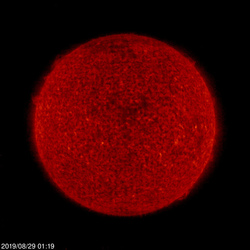 Predicted solar flux for the next 45 days is 66 on August 29 - September 4; 67 on September 5 - 11; 68 on September 12 - 15; 67 on September 16 - October 8, and 68 on October 9 - 12.
Predicted solar flux for the next 45 days is 66 on August 29 - September 4; 67 on September 5 - 11; 68 on September 12 - 15; 67 on September 16 - October 8, and 68 on October 9 - 12..jpg)
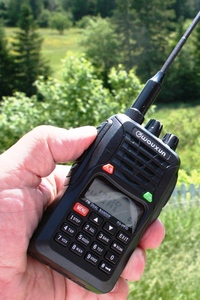 CEPT ECC positions for World Radiocommunication Conference 2019 this fall. In the annex, France counters contrary assertions from International Amateur Radio Union (IARU) and continues to insist that spectrum sharing is possible.
CEPT ECC positions for World Radiocommunication Conference 2019 this fall. In the annex, France counters contrary assertions from International Amateur Radio Union (IARU) and continues to insist that spectrum sharing is possible..gif) N1MM Logger+ users planning to operate the
N1MM Logger+ users planning to operate the 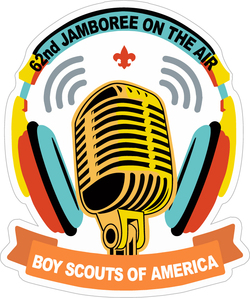
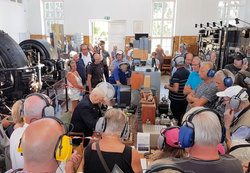 Sweden's Alexanderson Alternator station
Sweden's Alexanderson Alternator station 







